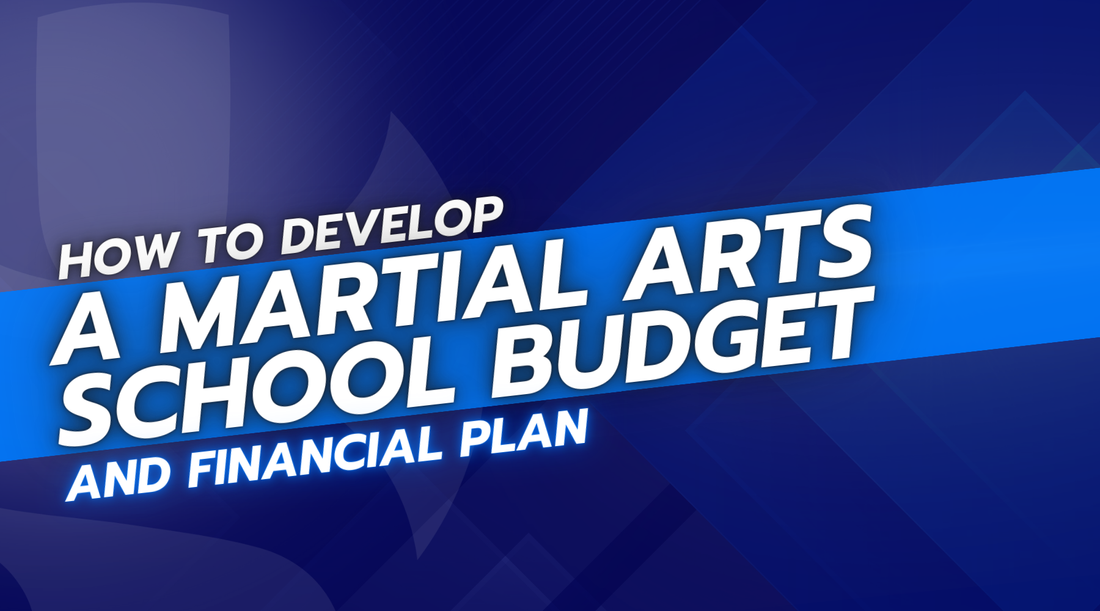
How to Develop a Martial Arts School Budget and Financial Plan
Share
Opening a martial arts school is a dream for many martial artists, but transforming that dream into a sustainable reality requires careful financial planning. A well-structured budget and financial plan not only ensure the smooth operation of your school but also set the stage for long-term success. This article will guide you through the essential steps to develop a comprehensive budget and financial plan for your martial arts school.
Understanding the Basics
Before diving into the specifics, it's essential to understand what a budget and financial plan entail. A budget is a detailed outline of your income and expenses over a specific period, usually monthly or annually. A financial plan, on the other hand, is a broader strategy that includes your budget but also encompasses financial goals, forecasting, and contingency planning. For martial arts schools, having both a budget and a financial plan is crucial to navigate the financial challenges and opportunities of the business.
Setting Financial Goals
Setting clear financial goals is the first step in financial planning. These goals can be short-term (such as increasing student enrollment by 10% within six months) or long-term (like purchasing your facility in five years). Utilizing the SMART goals framework—Specific, Measurable, Achievable, Relevant, Time-bound—can help in setting realistic and actionable goals. For instance, a SMART goal for a martial arts school could be: "Increase monthly membership revenue by 15% within the next year by implementing a referral program."
Initial Costs and Investments
Starting a martial arts school involves several initial costs. These include:
- Leasing or Buying a Property: Depending on your budget and long-term plans, you may choose to lease or buy a property. Leasing is less capital-intensive upfront but buying can be a better investment over time.
- Renovations and Setup Costs: Preparing the space for classes, installing mats, mirrors, and other necessary equipment.
- Equipment and Supplies: Martial arts gear, uniforms, training equipment, office supplies, and furniture.
- Licensing and Permits: Ensuring you have all the necessary licenses and permits to operate legally.
Operational Costs
Once your school is up and running, operational costs become a significant part of your budget. These include:
- Rent and Utilities: Monthly rent, electricity, water, and other utility bills.
- Instructor Salaries and Benefits: Compensation for your staff, including benefits if applicable.
- Insurance Costs: Liability insurance to protect against accidents and injuries.
- Marketing and Advertising: Expenses related to promoting your school, including online ads, flyers, and events.
- Software and Administrative Tools: Systems for managing memberships, scheduling, and finances.
Revenue Streams
To sustain and grow your martial arts school, it's essential to diversify your revenue streams. Common sources of income include:
- Membership Fees: The primary source of revenue, including monthly, quarterly, or annual membership plans.
- Special Classes and Workshops: Offering additional training sessions, self-defense workshops, or special events.
- Merchandise Sales: Selling uniforms, equipment, branded apparel, and other merchandise.
- Event Hosting and Competitions: Organizing tournaments or events that attract participants and spectators.
- Sponsorship and Partnerships: Collaborating with local businesses or organizations for sponsorships and partnerships.
Creating a Budget
With an understanding of costs and revenue, you can now create a budget. Decide whether you want to create a monthly or annual budget, or both. Start by estimating your expected income and expenses. Ensure you allocate funds for all categories, including a contingency fund for unexpected expenses. This will help you stay on track financially and make informed decisions.
Financial Forecasting
Financial forecasting involves predicting your future financial performance based on current data. This helps in planning for growth and preparing for potential challenges. Methods for financial forecasting include trend analysis and scenario planning. Regularly update your forecasts based on actual performance to ensure accuracy.
Managing Cash Flow
Cash flow management is crucial for maintaining the financial health of your school. Understand your cash flow cycles—when money comes in and goes out. Implement strategies to improve cash flow, such as offering discounts for early payments or negotiating better payment terms with suppliers. Always have a plan for handling cash flow shortfalls to avoid financial stress.
Cost Control and Reduction
Identifying areas where you can cut costs without compromising quality is vital. Negotiate better deals with suppliers, reduce energy usage, and manage resources efficiently. Regularly review your expenses to find new opportunities for savings.
Financial Monitoring and Reporting
Set up a financial monitoring system to keep track of your finances. Key financial reports include profit and loss statements, balance sheets, and cash flow statements. Regular financial reviews help you make informed decisions and adjust your budget and financial plan as needed.
Securing Funding and Financing Options
If you need additional funding, explore various financing options:
- Personal Savings and Loans: Using your savings or taking out a personal loan.
- Grants and Subsidies: Applying for grants and subsidies that may be available for small businesses.
- Crowdfunding and Community Support: Leveraging community support through crowdfunding platforms.
Tax Planning and Compliance
Understanding your tax obligations is crucial for avoiding penalties and maximizing deductions. Effective tax planning involves keeping accurate records, understanding deductible expenses, and seeking professional advice when needed.
Contingency Planning
Having a contingency plan in place is essential for dealing with unexpected challenges. Build an emergency fund to cover unforeseen expenses and ensure you have adequate insurance coverage. This helps mitigate risks and provides financial stability.
Final Thoughts
Developing a martial arts school budget and financial plan is a comprehensive process that involves setting goals, understanding costs, managing cash flow, and planning for the future. By following the steps outlined in this guide, you can create a solid financial foundation for your school, ensuring long-term success and growth.
